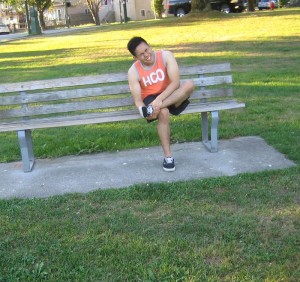An anal abscess is a painful condition with the accumulation of pus near the anus which can be caused by infection of the small anal glands. A common type of abscess is the perianal abscess which develops as a painful boil-like swelling found near the anus. These are usually colored red and warm when touched.
Sometimes, anal abscess can develop a complication called fistula which is a small tube that has an abnormal attachment between the area of the abscess and the skin. An anal fistula causes continuous drainage.
Causes
- Sexually transmitted infections
- Blocked anal glands
- Infections of the anal fissure which is a small tear found in the skin of the anal canal.
For infants and toddlers, constant changing of diapers, cleaning during changing diapers can help prevent the development of anal fissures and perianal abscesses.
Symptoms
- A constant and throbbing pain that becomes worse especially when sitting down.
- Fever and chills
- Irritation of skin found around the anus with redness, swelling and tenderness of the area
- Discharge of pus
A constant and throbbing pain that becomes worse especially when sitting down. - Constipation and pain especially during bowel movements
- Malaise
Treatment
- Take a bath using warm Sitz bath with Epsom salt at least 20-30 minutes. Refill with warm water when the water becomes cool. Pat the area affected area dry using a towel or cotton cloth and avoid making the area wet.
- Make a poultice by mixing 2 teaspoons of turmeric, 2 teaspoons of baking soda, 2 teaspoons of coconut oil and ¼ teaspoon or 15 drops of tea tree oil. Mix them all in a bowl until a smooth consistency is achieved. Using a q-tip swab, apply the poultice directly into the affected area of the anus. Spread the poultice over the entire area and cover with gauze so that it will not fall out.
- Use powder and undergarments made of cotton in order to help make the affected area dry at least 3 times every day with the last before going to bed. In the morning, if the abscess has not yet drained, repeat the procedure every day until there is drainage from the affected area.
- After the drainage begins, gently wipe the affected area using a soft cotton cloth that is soaked in hot water and rubbed with hypoallergenic soap.
- Apply hot compress on the affected area to promote fast healing, increased blood circulation in the area and eliminate bad toxins from the area.
- Drink plenty of liquids especially water and fruit juices in order to help eliminate bad toxins from the body.
- Take multi-vitamin supplements every day.
Tips
- Maintain hygienic measures when cleaning and caring for abscesses in the anus.
- Make it a habit of having a bowel movement at least twice every day in order to avoid putting strain to the rectum and anus.
- Avoid straining while defecating.

